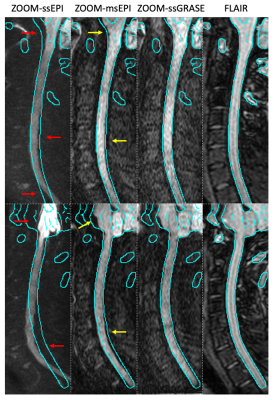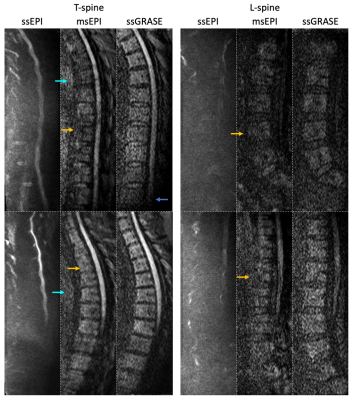Zhiqiang Li1, Melvyn B Ooi2, and John P Karis1
1Neuroradiology, Barrow Neurological Institute, Phoenix, AZ, United States, 2Philips Healthcare, Gainesville, FL, United States
1Neuroradiology, Barrow Neurological Institute, Phoenix, AZ, United States, 2Philips Healthcare, Gainesville, FL, United States
DWI of the spine has not been widely adopted due to geometric distortion artifacts with EPI. Here we present a single-shot GRASE technique with whole-mode acquisition and reduced FOV imaging. Volunteer studies demonstrate minimum distortion artifacts and comparable SNR to msEPI.

Fig. 3. Comparison of geometric distortion artifacts in 2 volunteers. The strong distortion artifacts in ssEPI (red arrows) are reduced but still present in msEPI (yellow arrows), while are eliminated in ssGRASE, as indicated by the contour extracted from FLAIR.

Fig. 5. Illustration of T and L spine images. As can be observed, strong distortions exist in ssEPI. These artifacts are significantly reduced in msEPI with some residuals. msEPI may exhibit some artifacts (cyan arrows) and degraded quality of the vertebral body (orange arrows), which are improved in ssGRASE. It is typical that the spinal nerve bundle is not well seen in L-spine, where instead the vertebral bodies are the primary focus in many neurological applications. The shading in the lower corner of ssGRASE T-spine image (blue arrow) will be investigated.
